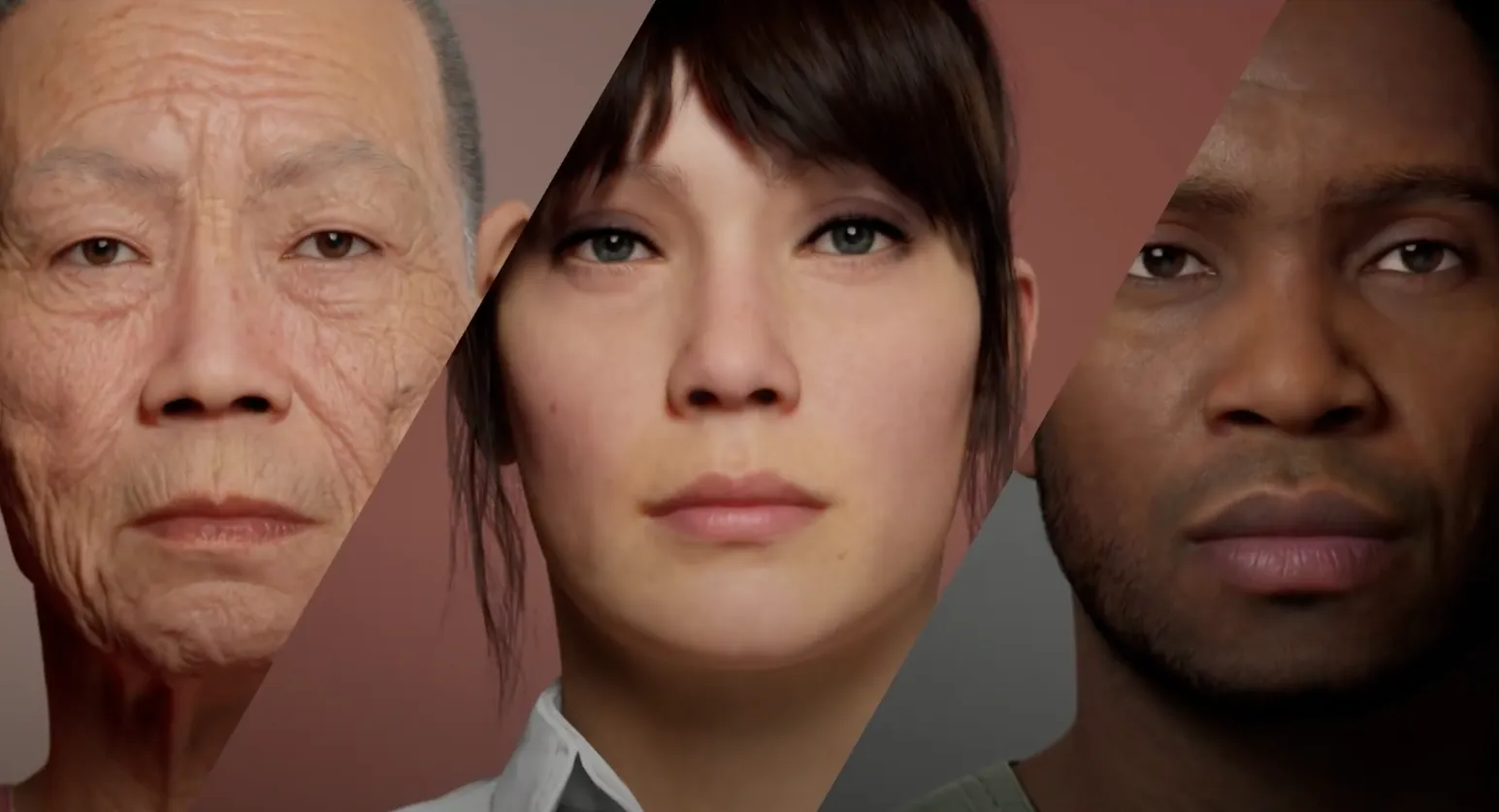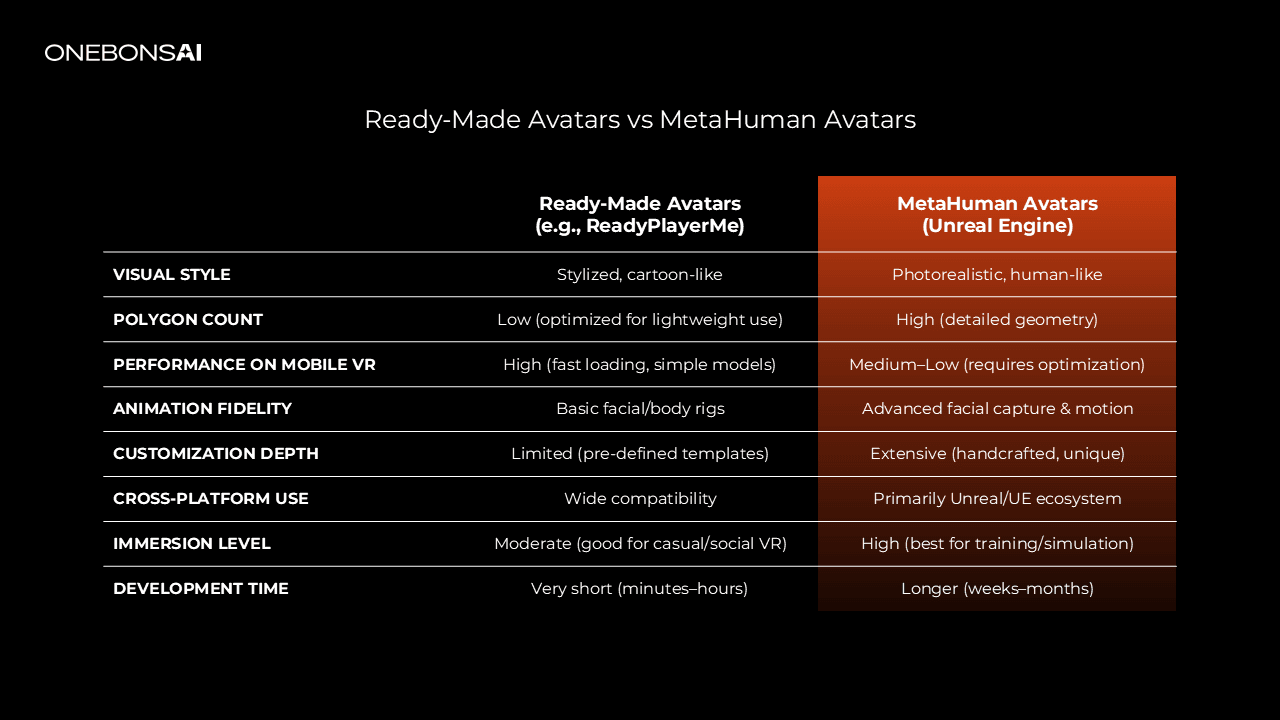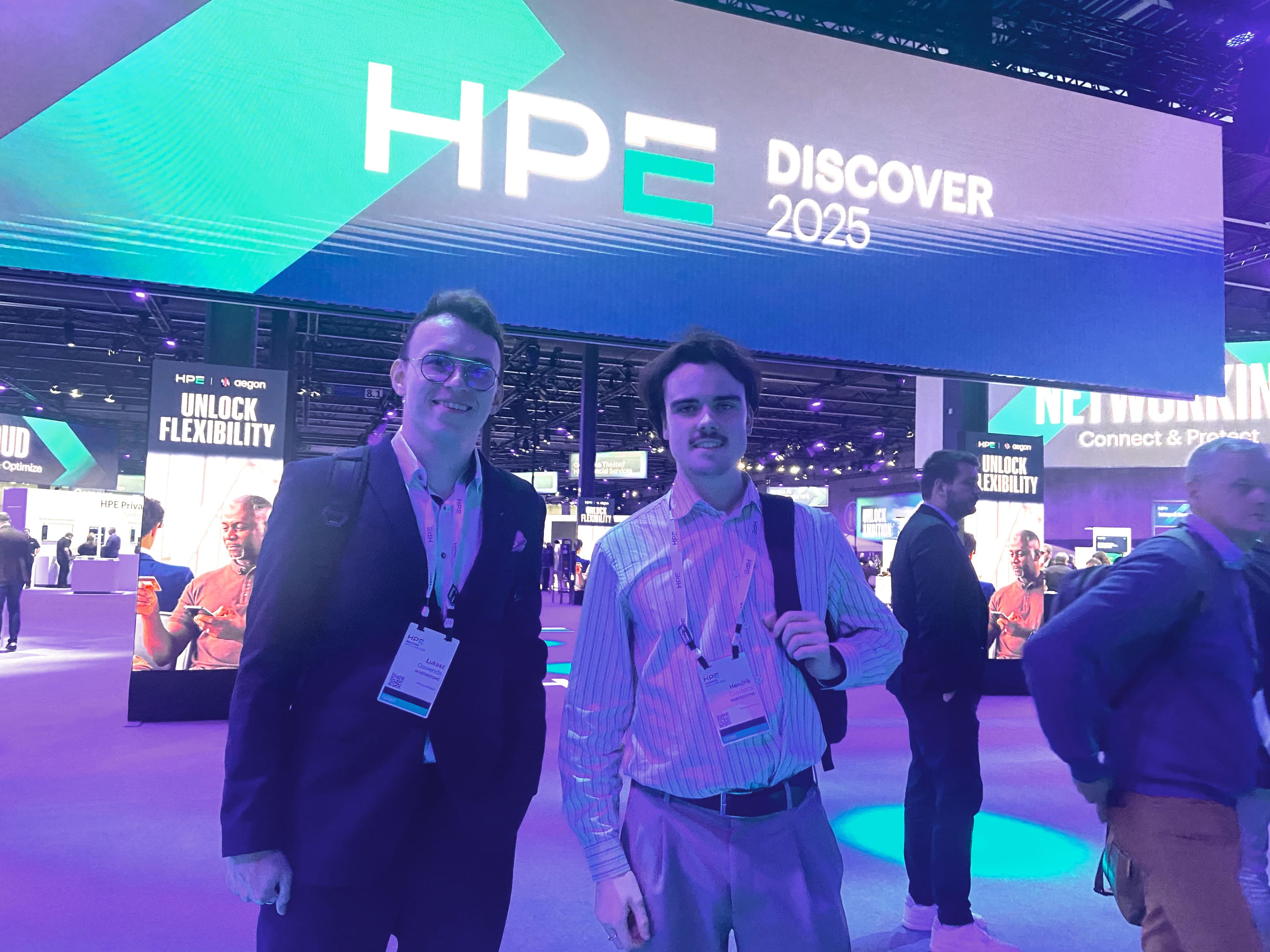MetaHuman Avatars vs Ready-Made Avatars: Choosing the Right Fit for VR

Introduction
One of the most common client questions is: “Should we use ready-made avatars, or invest in custom-built MetaHuman avatars?”
It’s a valid concern. Avatars are the face of your VR experience, and the choice between quick, stylized avatars and hyper-realistic ones directly affects immersion, performance, and training outcomes.
In this article, we’ll compare ready-made avatars (with platforms like ReadyPlayerMe as a popular example) against MetaHumans, explain their trade-offs, and provide a practical framework for deciding which solution fits your project best.
Why VR Has Different Demands
Virtual reality isn’t as forgiving as traditional games or videos. To keep users engaged and comfortable, VR requires:
- High frame rates (ideally 90FPS or more).
- Low latency to prevent nausea.
- Rendering efficiency - every polygon, texture, and rig adds to system load.
What looks cinematic on a flat screen can cause jitter or discomfort in VR if not carefully optimized. This makes the design of avatars not just an artistic choice, but a performance-critical decision.

Ready-Made Avatars: Strengths and Limitations
Ready-made avatars (like those from ReadyPlayerMe) are designed for speed and accessibility. Their advantages include:
- Ease of creation: Users generate avatars in minutes.
- Broad compatibility: Works across multiple platforms and devices.
- Stylized aesthetics: Lightweight models optimized for performance.
However, the trade-offs are noticeable in professional VR:
- The cartoon-like style often breaks immersion in serious training contexts.
- Limited customization for realism compared to handcrafted models.

MetaHuman Avatars: Strengths and Limitations
MetaHumans, developed in Unreal Engine, are on the other end of the spectrum. Their key benefits are:
- Hyper-realism: Lifelike detail in skin, hair, and facial expressions.
- Deep immersion: Creates authenticity in training or enterprise VR.
- Extensive customization: Tailored to specific scenarios or audiences.
The challenges:
- Performance overhead: Higher polygon counts demand careful optimization.
- Longer development cycle: Requires skilled rigging, animation, and setup.
Technical Comparison
Here’s how MetaHumans stack up against ready-made avatars across key technical factors:

Why MetaHumans Excel in VR Training
For casual or social VR, ready-made avatars do their job. But in enterprise training scenarios, realism can make or break the experience.
- Higher presence: Users treat scenarios more seriously when characters look real.
- Trust and credibility: Stakeholders see value in lifelike simulations.
- Better transfer of learning: Realistic settings increase knowledge retention.
In our own projects, we tested both: while ready-made avatars were acceptable for lightweight user profiles, on Android headsets they appeared relatively degraded. MetaHumans, by contrast, held their realism across devices, making them the stronger option for professional use.
Cost vs Value: Is MetaHuman Worth It?
Clients often ask: “MetaHumans look great, but are they worth the extra cost?”
Upfront Costs
- Ready-made avatars: Very low cost (often included in platform use).
- MetaHumans: Higher cost due to design, rigging, and optimization.
Value in Return
- Training impact: For high-stakes scenarios (medical, safety, technical), realism increases user engagement and outcome effectiveness.
- Longevity: MetaHumans, once created, can be reused across multiple modules, scenarios, and updates.
- Stakeholder buy-in: Decision-makers often perceive greater value in high-fidelity environments.
In short, ready-made avatars are cost-efficient for entry-level or casual VR. But in professional VR training, the ROI from improved realism far outweighs the higher initial investment.
Usability vs Fidelity: Making the Choice
The decision comes down to context:
- Choose ready-made avatars if you need quick deployment, lightweight performance, or you’re building for social/casual VR.
- Choose MetaHumans if you’re delivering enterprise-grade training where realism drives immersion, learning retention, and credibility.
As we often tell clients: in VR, a smooth, immersive 90FPS experience with optimized realism is always preferable to a beautiful but stuttering avatar. MetaHumans, when optimized correctly, strike that balance.
Conclusion
Both ready-made avatars and MetaHumans have a role in VR. Ready-made avatars provide speed and convenience, while MetaHumans deliver realism, immersion, and long-term value.
At OneBonsai, we’ve seen firsthand how choosing the right avatar strategy can transform a VR training project. For organizations where learning outcomes, realism, and credibility matter most, our recommendation is clear: MetaHumans are the stronger, future-proof investment.

GIORGI PKHAKADZE
September 30, 2025








